1
HOME > Tips & Advice >
THE RULES OF WEARING SHORTS
Written by Ivan Yaskey in Tips & Advice on the 3rd August 2023
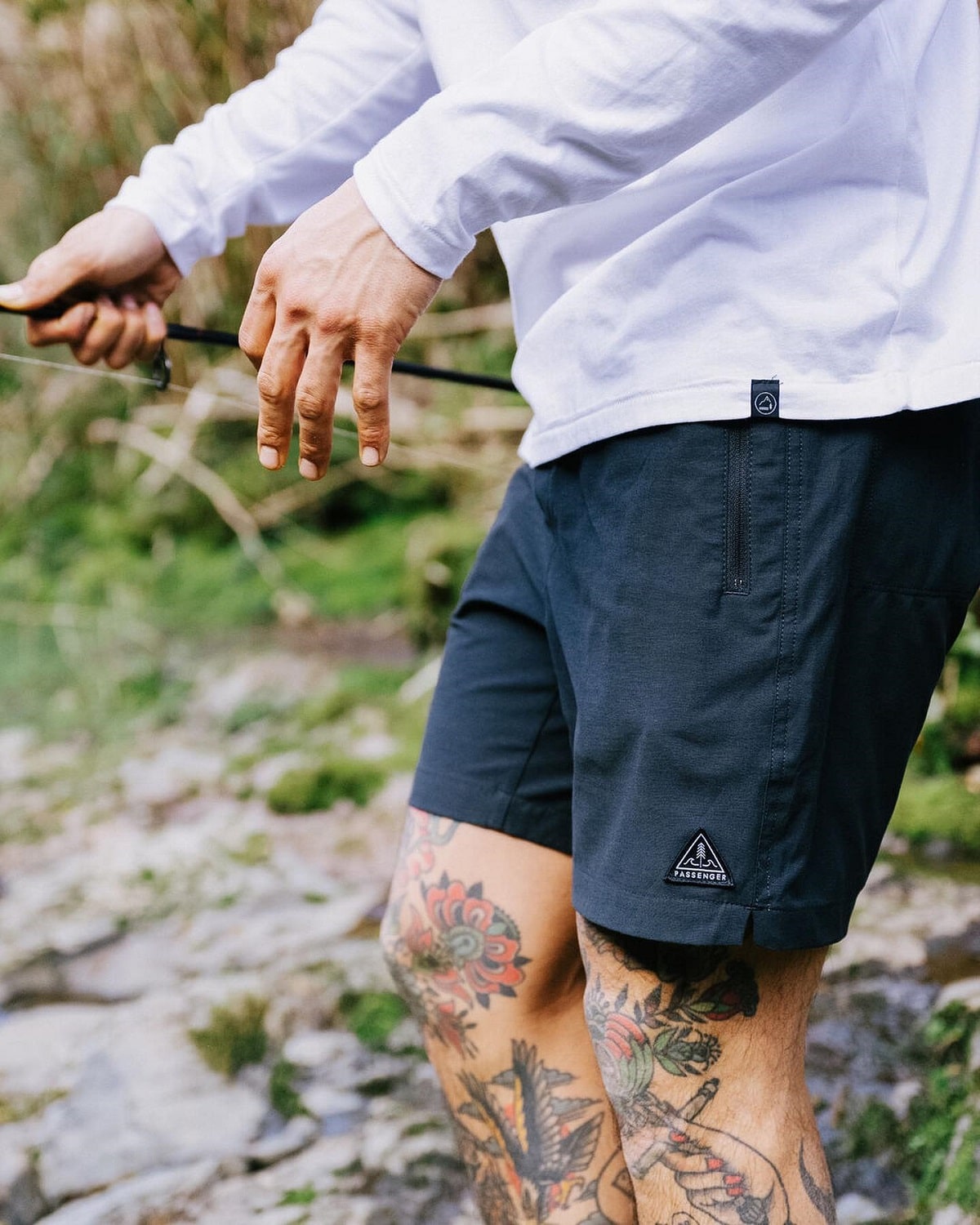
Maybe you believe shorts are just for children and teens. Grown men wear trousers, you think, and you keep your cuffs rolled down even as the temperatures rise. Yet, whether for comfort, global warming, or simply better choices out there, many men are coming around to shorts. However, in between the baggy cargos signaling an American tourist to the swim trunk-like five-inch inseam styles we’re seeing more of, understand their key attributes and how to look reasonably put together:
The History of Shorts
True to assumptions, shorts started out as a children’s-only garment. Called knickerbockers, they were worn mostly as short, knee-high trousers for school or other uniforms, and were frequently paired with tall socks. The design, as strange as it seems in the present, wasn’t a fluke or impractical: Rather, the cut eliminated extra wear and tear around the knees. Yet, reaching maturity – at least in late 19th century and early 20th century terms – meant understanding how to behave in public and take care of your clothing. Boys into their teens switched to full-length trousers under the assumption that they were too old for aggressive play outdoors and, if they weren’t in school, were likely working. In response to the warmer-to-blistering climates American and European soldiers endured during World War II, shorts started to appear in military uniforms. Predictably, this adoption infiltrated adult wardrobes following the war in varying degrees – for example, sports uniforms and men’s casual wear. From here, inseam lengths varied over the decades. Early styles reflected the knee-length military form. By the ‘70s and ‘80s, the garment hit farther up the thighs and frequently sported a curved hem. The ‘90s took a different turn – not only longer but going past the knees and having a wider, almost culotte-like cut.
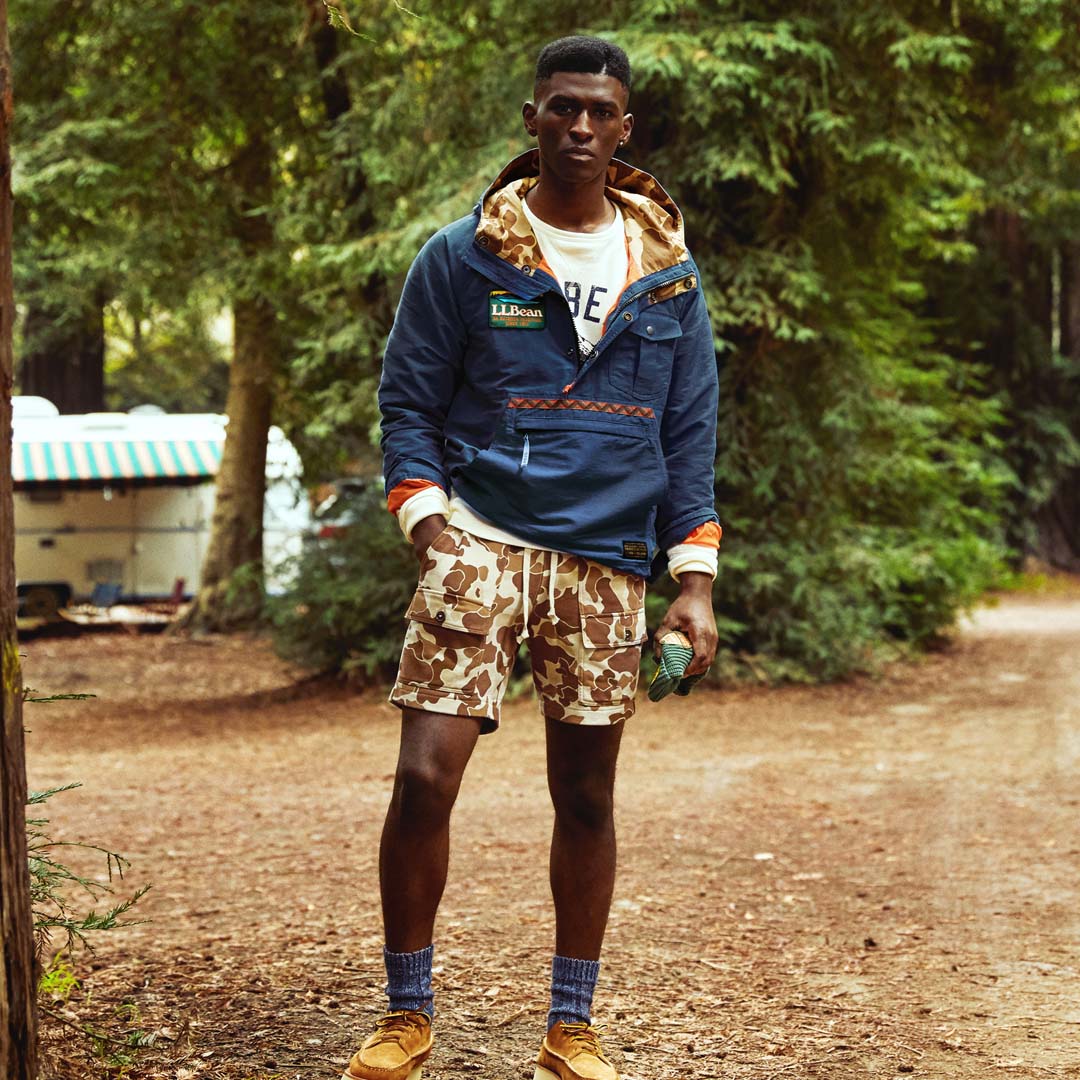
What to Look for In a Pair of Shorts
Despite this variety, men’s shorts tend to mirror trouser trends in terms of cuts, materials, and fit. In the present, think about the following:
Fit
In terms of fit, shorts receive the least amount of focus. They’re a grab-and-go garment that you might put on for a run, an hour at the gym, or relaxing at home where no one will see you. As such, “Does it fit?” ultimately means, “Will the waistband prevent them from sagging?” For a more refined and adult approach, start by understanding the effect shorts can have: Wider cuts, despite the current ‘90s obsession, make your hips and thighs appear bulky. Worse, at the wrong angle, the garment starts to fall like a skirt. To avoid this, seek out a tapered fit – also called a chino short – that hits a couple of inches above the knee and has a reliable midrise. Steer clear of the elastic waist, unless it’s accompanied by a buttoned closure. At the same time, make sure you can move – shorts are a casual garment, after all.
On top of this:
- Go for a straight to tapered leg to accentuate rather than camouflage your legs. This has the added benefit of highlighting the efforts of your workouts.
- Avoid a flared shape or edge, which can resemble a skirt or pair of women’s shorts.
- Veer away from below-the-knee lengths, popular with Bermuda styles, as the extra inches make your legs appear shorter.
- If the shorts appear too long, cuff them hem, but no more than two rolls. Otherwise, doing so adds bulk toward the base of your thigh. Instead, see if you can have them hemmed for a cleaner, more defined finish.
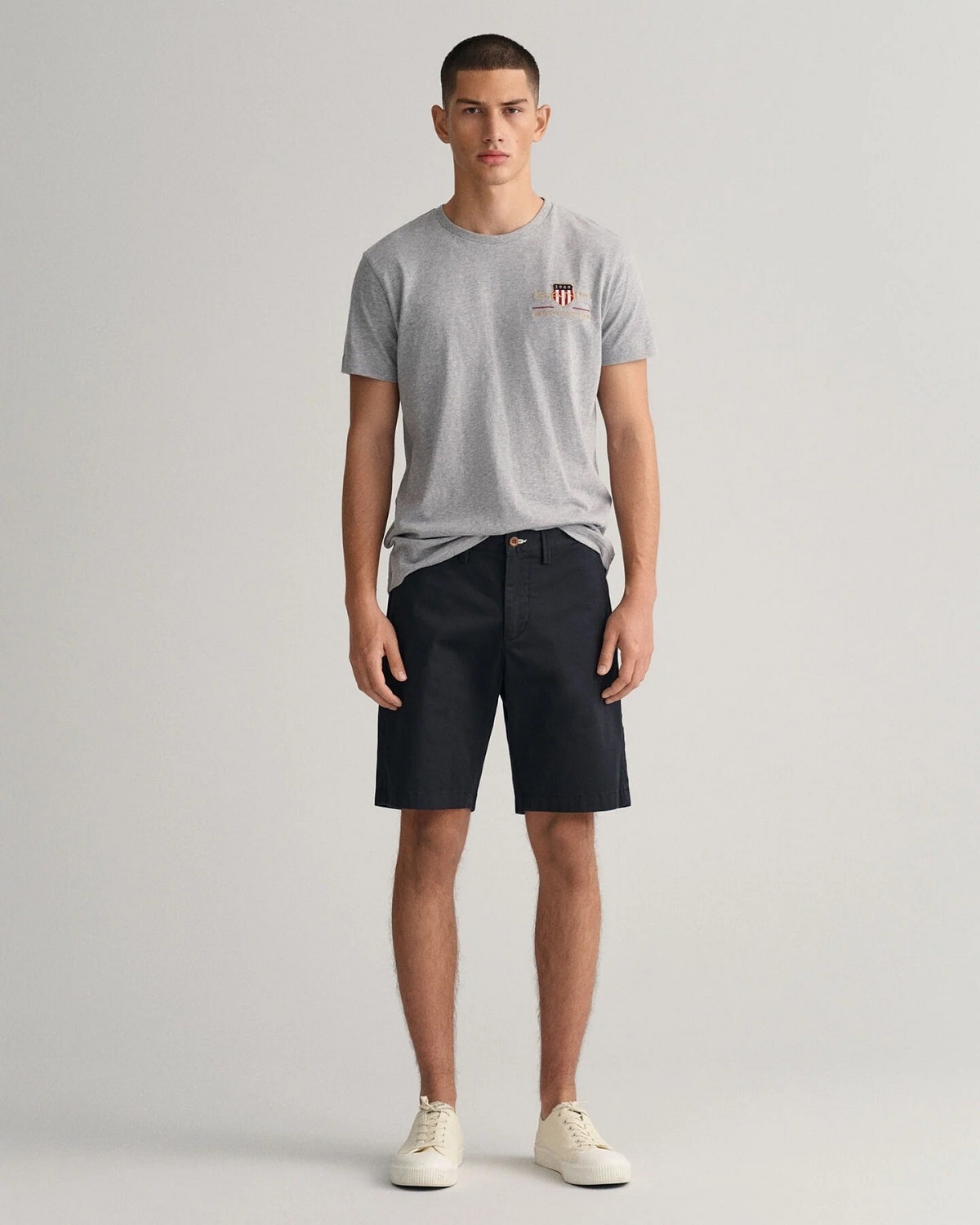
Length
Not all lengths end up looking the same on your legs. As already mentioned, look for an inseam that falls anywhere from one to three inches above your knee. In general, shorter inseams plus a slimmer fit lengthen the appearance of your legs. As a reference point, the four-most common inseam lengths are three and five inches – both on the shorter end – followed by seven and nine inches. 10 and 11 inches, for most men, start to cover your knees. Within this group, you’re more likely to see three and five inches for swim trunks and longer lengths for athletic and casual shorts.
Type of Shorts
Going beyond inseam, the most common types of men’s shorts include:
- Flat front, a slimmer to regular-fitting short without a crease or pleat below the waist.
- Pleated, a retro style we’re seeing more of with one or more sewn-in folds on each side.
- Cargo shorts, which have multiple slip and flap pockets on the sides.
- Denim, which started as cut-offs back in the ‘60s and now bridges casual to workwear styles based on pockets and features added.
- Bermuda, a longer flat-front short with a slimmer cut that often features a bright colour or pattern.
- Madras shorts, which, true to the material, are made of a lighter-weight cotton with an open weave and a striped pattern. •
- Running shorts, a type of athletic style with an inner compression brief and a looser short, often with a curved hem, on the exterior.
- Cycling shorts, another athletic style, this time with a tighter, flexible fit and friction-reducing seams.
- Mesh shorts, also known as basketball or gym shorts, that provide all-around breathability for active use.
- Hiking shorts, which have a flat-front style but often utilize stretch, abrasion-resistant, moisture-wicking, and cooling properties.
- Swim trunks, with a shorter inseam and moisture-shedding material.
- Board shorts, a cross between a flat front and swim trunks.
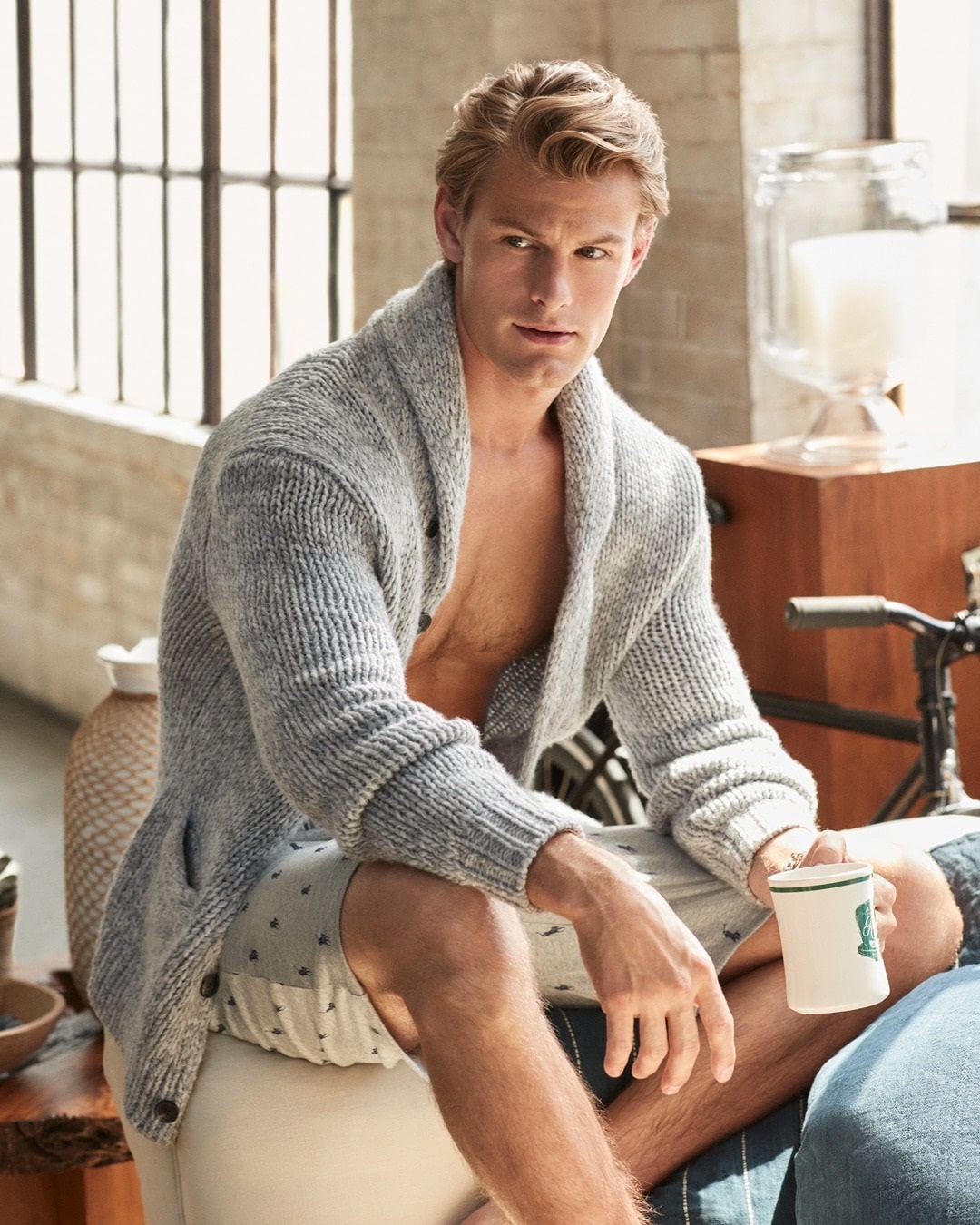
Materials
Despite the variety listed above, cotton remains your friend for its breathability and ability to dry out. Linen also delivers a similar effect. Yet, not all cotton materials feature the same properties: In general, the tighter the weave or the thicker the material, the more heat it holds in. Common offerings for non-athletic shorts include:
- Twill, which reflects the familiar construction of chinos and provide the greatest amount of durability.
- Seersucker, a puckered, ridged material that helps divert away heat and stays above the skin for improved air flow.
- Madras, with a more open weave initially crafted for hot, humid climates.
- Gauze, which takes the construction of madras to another level.
- Cotton canvas, a heavyweight material used almost entirely for work shorts.
- Chambray, for a lighter take on classic denim.
On top of these attributes, you’ll typically find men’s shorts in a solid colour, although we’re seeing more stripes, checks, plaid, and other prints, especially with the ongoing popularity of matching two-piece sets.
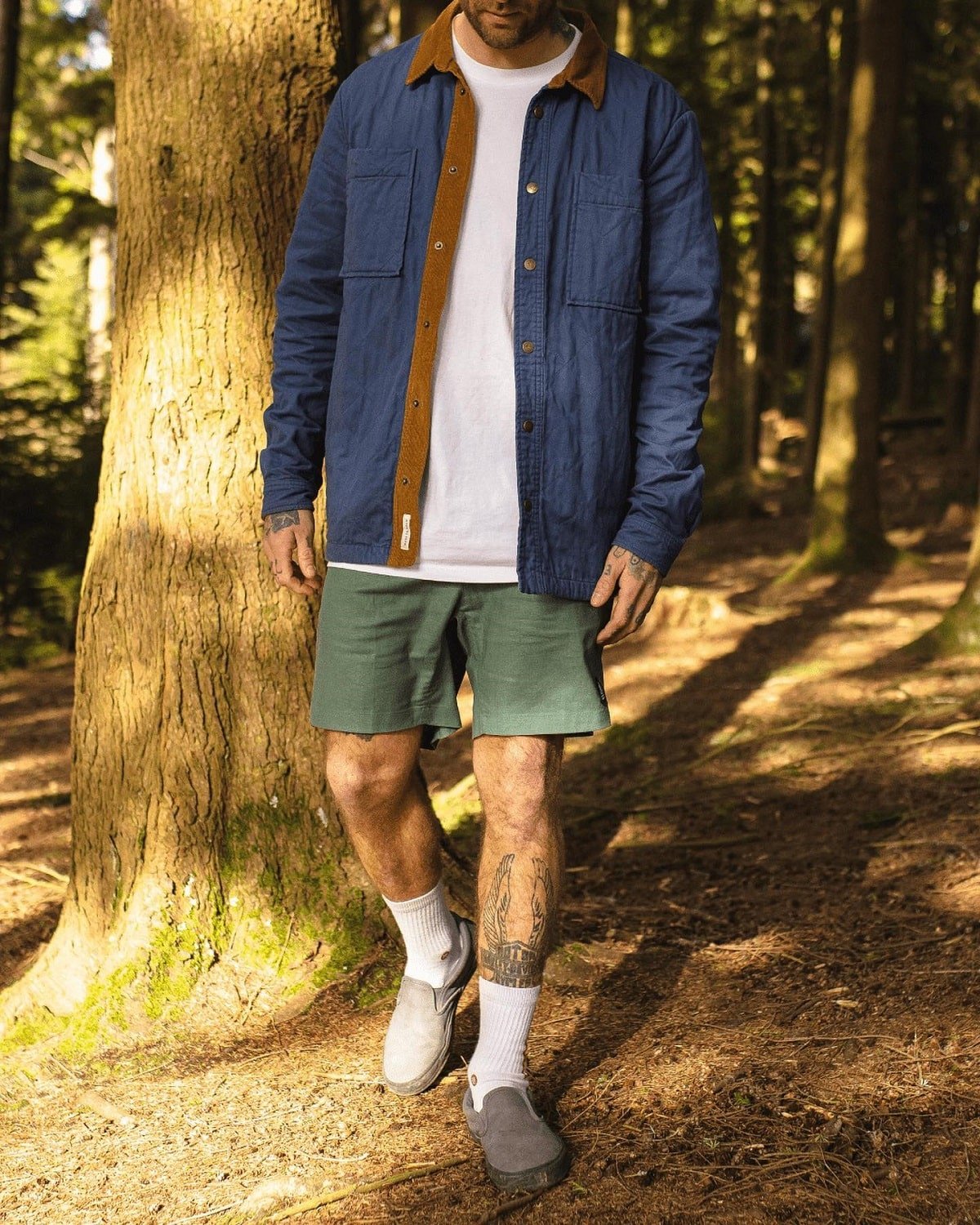
What Should You Wear With Shorts?
The answer, here, looks like anything – polos, tank tops, and even long-sleeve shirts. Heck, why not bring back the short suit that had its moment about 10 years ago?
But, more seriously:
- Shorts are a warm-weather garment and look disconnected (or as if you slashed your trousers off) when worn with a sweatshirt, button-front, or long-sleeve crewneck. Should you expect a cold night while at the beach, bring along a lightweight jacket, like a bomber or windbreaker.
- Shorts aren’t a formal or even smart-casual garment, so leave them out of your workplace wardrobe and never show up in a set to a wedding. Especially due to the prevalence of air conditioning, default to lighter-weight chinos during the summer months. Reserve your shorts for vacations, lounging around, and other casual environments.
- Despite their history, tall socks look odd with shorts – also, again, like you’re wearing too-short trousers. Look for a low sock height that fits into your shoes, or just go without, especially with boat shoes or slip-ons.
- On the subject of shoes, think about pairings: Trainers go with all types of shorts, but preppy styles like boat shoes or espadrilles better suit twill chino or madras. Thicker leather shoes, like boots or even loafers, appear mismatched with the lighter construction.
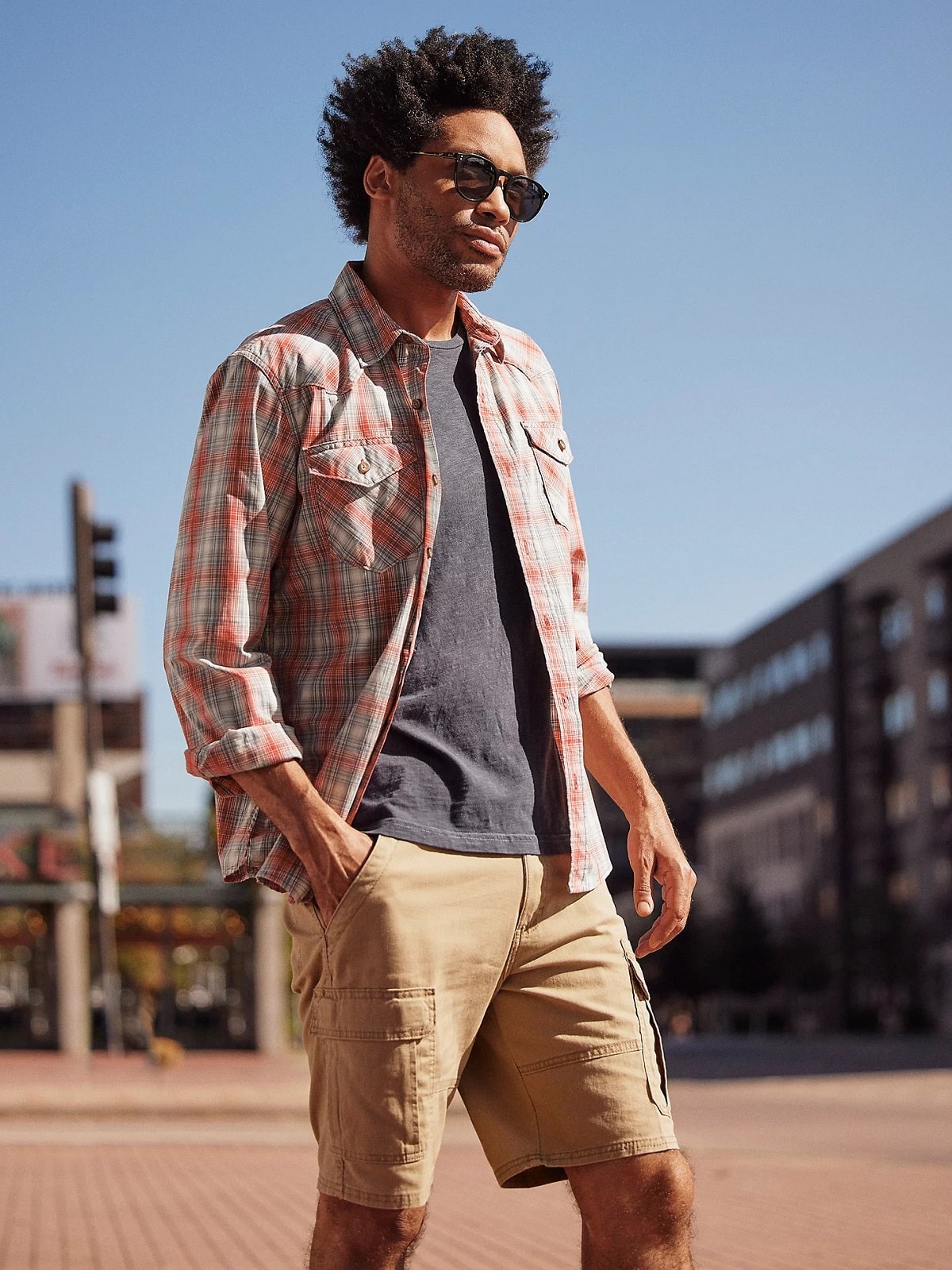

Trending
2
3
4
5
6
7
8
9
10










